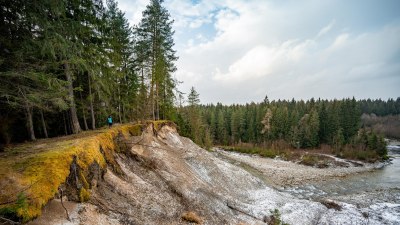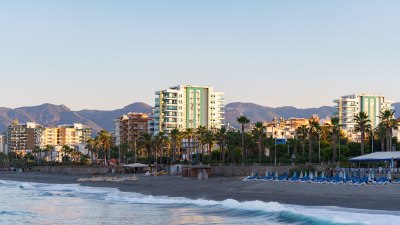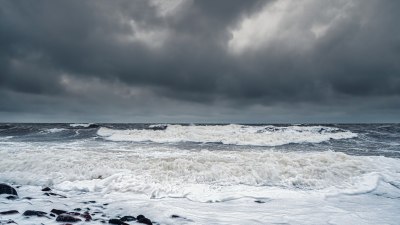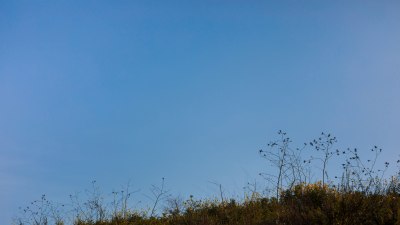The Link Between Weather and Landslides
Explore the relationship between weather patterns and landslide occurrences, highlighting risk factors and prevention methods.

Image by alexuhrin95 on Freepik
Landslides are natural disasters that occur when the stability of a slope is compromised, often resulting in significant destruction and loss of life. Understanding the factors that contribute to landslides is crucial for disaster preparedness and risk mitigation. One of the primary contributors to landslide occurrence is weather. This article delves into the intricate relationship between various weather conditions and landslide activity, exploring how precipitation, temperature fluctuations, and other meteorological phenomena can trigger these geological events.
Understanding Landslides
A landslide is defined as the movement of rock, earth, or debris down a slope. These events are influenced by several factors including geology, slope angle, vegetation, and importantly, weather conditions. Landslides can occur in any region but are more prevalent in areas where terrain is steep or where there is significant rainfall. The United States Geological Survey (USGS) categorizes landslides into several types: rotational slides, translational slides, falls, and flows. Each type has distinct characteristics and can be triggered by specific weather conditions.
The Role of Precipitation
Precipitation, particularly heavy rainfall, is one of the most significant factors influencing landslide activity. When intense rain occurs, the soil becomes saturated, increasing pore water pressure and decreasing the soil's shear strength. This saturation can lead to failure, causing the soil and rock to slide downhill. Moreover, prolonged periods of rainfall can have cumulative effects that further weaken the slope over time, increasing the likelihood of a landslide event. Studies show that regions experiencing annual rainfall above certain thresholds are at a heightened risk for landslides. For instance, a notable correlation has been observed between landslide occurrences in the western United States and significant rain events during winter months.
Snowmelt and Landslides
In addition to rainfall, snowmelt can also play a crucial role in triggering landslides. In colder climates, snow accumulation on slopes can create a precarious situation as temperatures rise. When snow begins to melt rapidly, it can lead to increased water infiltration into the soil. This rapid influx of water not only contributes to soil saturation but can also destabilize slopes, leading to landslides. The risk is especially high in spring months when a combination of melting snow and spring rains can create ideal conditions for landslide initiation. Mountainous regions, where snow accumulation is significant, often see a spike in landslide incidents during the transition from winter to spring.
Temperature Fluctuations
Temperature fluctuation plays an indirect yet significant role in landslide occurrences. Freeze-thaw cycles, especially in mountainous regions, can weaken rock and soil structures. When temperatures drop below freezing, moisture within cracks in the rock can freeze, expanding and causing structural stresses. Conversely, when temperatures rise, this ice melts, leading to a reduction in structural integrity. Over time, these cycles can lead to rockfalls and landslides as the material becomes increasingly destabilized. Additionally, rising global temperatures are creating more severe weather patterns, which may ultimately influence the frequency and intensity of rain and snowfall, thereby exacerbating landslide risks.
Soil Types and Landslide Susceptibility
The type of soil also influences how weather interacts with landslide risk. Clay soils, for example, have a unique response to water saturation. When wet, clay can become slippery, and at critical moisture levels, it loses cohesive strength, significantly increasing the chances of a landslide. In contrast, sandy soils drain quickly and may not become as susceptible to landslides under wet conditions, unless heavy rainfall persists for an extended period. Understanding the composition of the soil in an area can be key to assessing landslide risk, particularly in regions where weather patterns fluctuate drastically.
Impact of Vegetation
Vegetation plays a dual role in the context of landslides. On one hand, plants help stabilize slopes by anchoring the soil with their root systems. On the other hand, weather events such as heavy rainfall can cause root systems to rot or become loosened, diminishing their stabilizing impact. Additionally, when vegetation is removed due to wildfires or logging, the risk of landslides increases, especially in steep terrains. Thus, preserving vegetation in vulnerable areas is essential for minimizing landslide risk associated with adverse weather conditions.
Human Influence on Landslide Risks
Human activities can exacerbate the natural relationship between weather and landslides. Urbanization, land use changes, and infrastructure development can destabilize slopes. For instance, the construction of roads or buildings on steep slopes can increase runoff and decrease infiltration, leading to more rapid soil saturation during rain events. Furthermore, poor drainage practices can elevate the risk of landslides significantly. To mitigate the risk, considerations of local land use planning and sustainable practices become paramount.
Monitoring and Predicting Landslides
Advancements in technology have improved our ability to monitor and predict landslide occurrences. Remote sensing technologies, such as LiDAR and satellite imagery, allow scientists to analyze slope stability and track changes over time. Additionally, meteorological data can be integrated to assess potential landslide triggers. Predictive models that incorporate weather data can provide crucial information for early warning systems, helping communities prepare for and respond effectively to potential landslide threats. This integration of weather forecasting and geological assessments represents a significant step forward in managing landslide risks.
Conclusion
The link between weather and landslides is a complex interplay of natural processes that requires ongoing attention and research. As climate change leads to more extreme weather patterns, understanding this connection will be vital for the development of effective mitigation strategies. By integrating geological assessments with advanced weather forecasting, communities can better prepare for landslides, minimizing damage and enhancing public safety. It is essential for policymakers, urban planners, and the public to recognize the importance of weather in landslide dynamics and work towards sustainable practices that consider both environmental and human factors.











